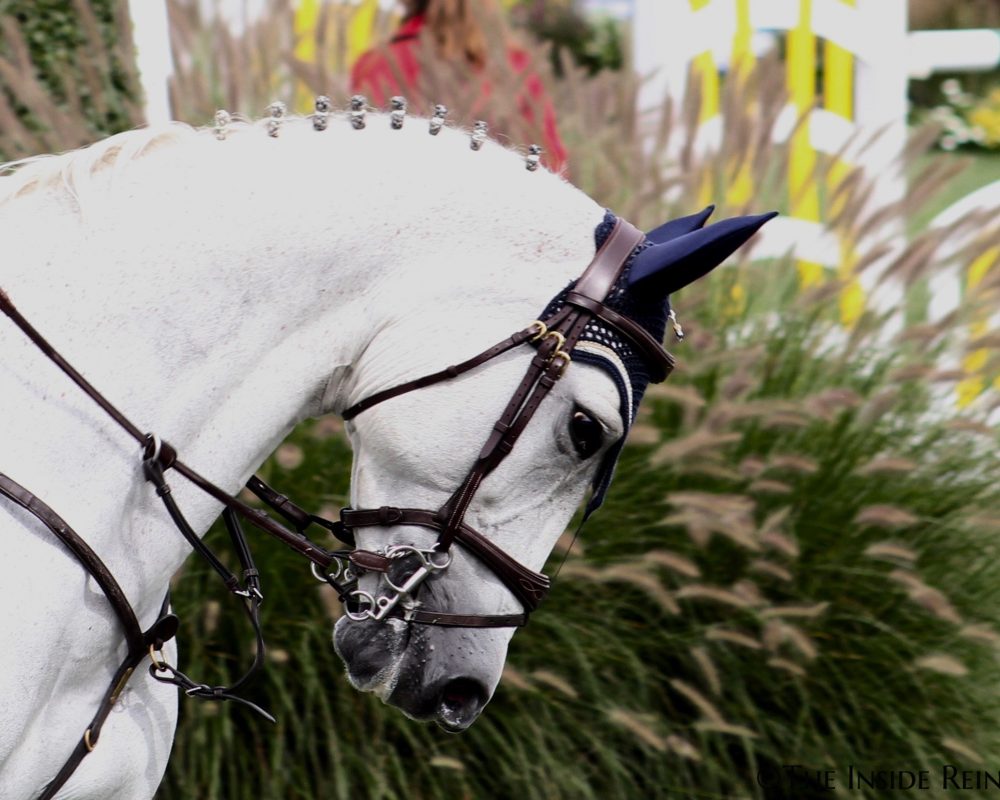The recent uproar over Iowa horse trainer Logan Allen’s Facebook posts have brought certain training techniques into the spotlight. While many are calling Allen’s extreme tactics waterboarding, Allen himself told KETV news he was simply practicing a common training method called “laying the horse down,” which he says is “a technique some people do to gain trust.”
This practice is often times controversial - for some it borders on abuse and to others it’s a perfectly valid expression of submission. While The Inside Rein does not condone the images on Allen’s Facebook page, we were interested in learning more about this particular training method. For insight into this practice we reached out to Mitchell Bornstein, horse trainer and author of Last Chance Mustang, for his thoughts.
Here’s what Bornstein had to say on the topic:
“I can’t speak to this individual’s frame of mind, but my guess is that no,
he was not waterboarding the horse. Rather, he was exposing, or in other
words, forcing the horse to accept a specific stimulus - in this case it just
happened to be water from the hose. So, if the horse had refused the worming
tube, or run from a plastic bag, he would have put it down on the ground in
the same fashion and then ‘exposed’ it to the tube or the plastic bag while
it was down and prone. So, was he using water itself to punish the
horse….my guess is no - this was not waterboarding. Rather, he was forcing
the horse - from a wholly submissive position, to accept what he had
previously refused. In this case, it happened to be the water and hose.
Do I agree with his method and rationale - me personally, no.
Laying down your horse - that’s a huge topic. If you google “laying down your
horse” or go to YouTube and search for it, I would bet you will get
thousands of hits and videos of anyone and everyone “laying down” their
horse. In addition, if you look at many or most of the top natural
horsemanship famous clinicians, they will have videos and how to’s on this
procedure. My guess is that they don’t teach it under the guise of forcing
your horse to accept something, but rather as a technique to build “trust”
with your horse or “trick” training.
So, in years past, did you have folks laying down a horse to develop trust
or teaching a trick? No, you had them laying down their horse to put it in a
submissive position, establish control while it is hobbled, and in many
cases punish it for being difficult/obstructive. In fact, I bet if you check
out many of the videos online there are warnings from some of the “trainers”
or “experts” that this should be used only when your horse is being really
difficult, violent, or dangerous. Those same folks very well could be the
ones who might put a saddle on a horse and then tie the animal down on
the ground for hours or days to teach it to accept and to stop fighting the
saddle - a process that was used in the past and is still used by some out
there.
I believe there is even a scene in the movie The Horse Whisperer where
Redford lays down the horse because the horse is fighting him and his control,
the trainer is trying to bond with the horse and establish trust. Buck Brannnaman worked on this film as a technical advisor and this is a big technique of his. There are countless very famous trick trainers/performers in addition to the show Cavalia who fill their shows with this technique and then lay all over atop the horse, etc.
My point is that this process has been out there for a long time but
is used and interpreted in many various forms. In this instance, the
individual is using it to force something on the horse that it didn’t want
to accept and he felt that it should. Laying down the horse is a
power/control move that puts the horse in a totally submissive position. To
then expose the horse to something that it finds threatening, a stimulus
that leads the animal to want to engage the right side of its brain and flee
is not teaching the horse to process or accept anything. Rather, it is
mandating, through force, acceptance. When most of us work with our horses,
we use a combination of positive and negative reinforcement. What I see here
is a third alternative, called “flooding” where you simply force the
stimulus upon the animal and leave it exposed, full tilt, until the horse
gives up, gives in, and most often just totally checks out mentally.
Personally, this is not something I want for any of my horses.
In this situation, me personally, I agree with the female trainer in the
news video who discussed other approaches. With this type of issue, I would
employ approach and retreat and various other methods which would help teach
the horse that it has nothing to fear and that the best/easiest course of
action is to accept rather than obstruct. Me, I want the horse to want to do
something and be a part of the decision. Forcing the horse to do something
takes its mind out of the equation and only breeds and instills trepidation,
anxiety, fear, and in my experience, eventual violent obstruction.”



May 14, 2016 at 3:27 pm
Thank you Mitch for trying to explain to those of us who can’t even imagine using these techniques on our horses ,why anyone could possibly want to subject their horses to such a barbaric way of training….
May 14, 2016 at 8:52 pm
What is the horse supposed to have done that the trainer Logan Allen regarded as “bad” and requiring punishment? Most modern trainers grasp that horses are not bad or misbehaving deliberately, but that they have not understood what is asked of them. The task for the trainer is not to punish but to find ways of helping the horse to understand that are both humane and meaningful in terms of how horses think and learn. A trainer who regards a horse (or dog or any animal being trained) as bad, stubborn, spiteful, stupid, defiant, silly, vengeful, etc., etc., etc., should not be a trainer. Those adjectives may describe human behaviour, but simply cannot be applied to animals. No animal is capable of, for example, spite. That is a human mental trait, one requiring a theory of mind - that is, knowing what another person is thinking or feeling. Animals do not possess a theory of mind; therefore they cannot deliberately act to, for example, annoy, defy, embarrass or frustrate a human being. They can only act in ways that are in their repertoire - do what brings rewards desirable to horses (food, relief from pressure, comfort, protection from danger, etc.); do not do what brings pain, discomfort, and fear (beatings, unrelenting pressure, exposure to danger, etc.) It appears that Mr. Allen is not only ignorant of this essential understanding of animals, but sees himself as in competition with animals, a competition which he is determined to win by any means, including the harsh domination which he boasts of in his postings. To sum up - Mr. Allen’s primitive attitude means he should NOT be a trainer.
May 16, 2016 at 10:23 pm
Please, explain to me why you want this horse to be sent to the sale barn and shipped to slaughter in Mexico? If you checked the facts, the horse used every weapon he had to hurt people. I would love to see that lady try her method with such a horse. She would be in the ER. This horses’ hope was Logan. It is so sad that so many don’t want the facts. It is easy to be an expert from afar. Logan and his horses and dogs came to our community and rounded up 20 head of 1500 pound fat cattle that were coming in an out of corn fields. Cattle that were running the highway at night and one had already crashed a vehicle. Because of Logan’s work, there were no other crashes or injuries. His dogs lay unleased on his pickup flatbed on the town square, calmest dogs you will ever see. His horses the same. I don’t know anything about training a horse, but it looks to me like the horse is completely fine and able to function next to a human now without striking out. That alone, will save that horse’s life.
The horse will tell you if it was good or bad….not the nut cases signing petitions they know nothing about.
May 17, 2016 at 1:19 pm
If it was Logan’s OWN HORSE out of his mare that he previously had in pasture and just started training it — how did it get so dangerous in the first place? It wasn’t the horse’s last chance, Logan was that horse’s ONLY chance, as he supposedly was the owner of the horse since birth.. It was HIS HORSE that he was training. That horse only knew what it was taught or not taught. The horse suddenly became dangerous ONLY after there was a stink about the photo he put up. NOW other photos have come up from his previous facebook account showing other horses laid down. Are ALL his own horses dangerous. You talk about cows and dogs, did you see the photo from his facebook of the cow roped and dogs tearing the cow’s tongue, ears and nose off with his comment being proud of the dog? Maybe you shoufd know more about the situation. Tying animals and inflicting pain or harm is wrong. The animals learn - learned helplessness, which means they don’t move regardless of what is being doen to them. They do this because they learned there is never any escape to harm. It is conditioning them to give up no matter what is going on. A horse or dog that stays still because of this training is not proof the training works but that it is scared shitless to move because there will be more pain. It is a sick way of training.